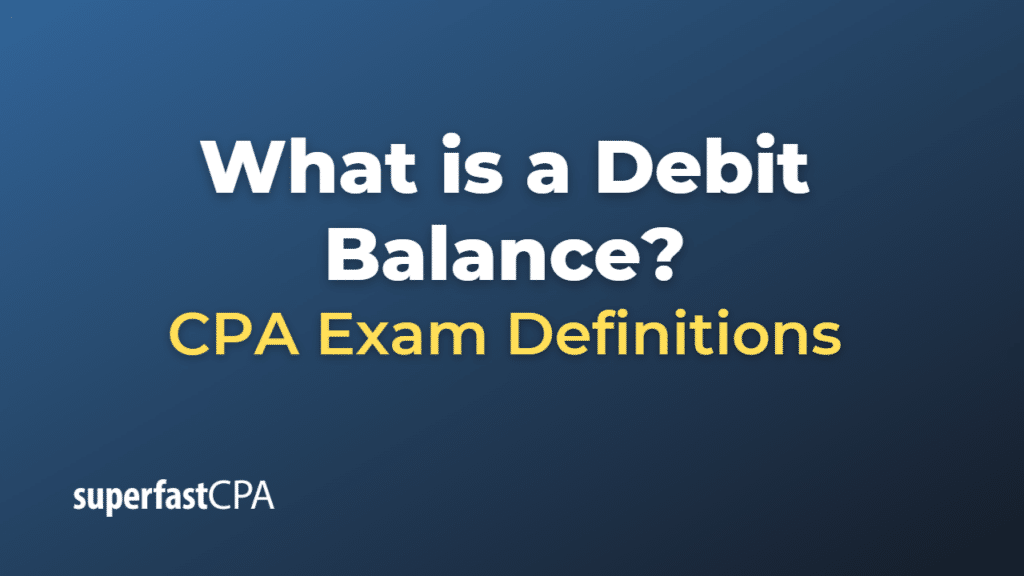Debit Balance
A debit balance is the amount that remains in an account after all debit entries have been offset by all credit entries. In accounting, all accounts have either a normal debit balance or a normal credit balance.
Here’s a brief summary of which types of accounts have which normal balances:
- Assets: Asset accounts such as Cash, Accounts Receivable, Inventory, Prepaid Expenses, and Equipment have a normal debit balance. An increase in these accounts is recorded as a debit, and a decrease is recorded as a credit.
- Expenses: Expense accounts such as Rent Expense, Salaries Expense, and Utilities Expense also have a normal debit balance. Increases in expenses are recorded as debits, and decreases are recorded as credits.
- Dividends or Drawings: The account used to record distributions to owners (called “Dividends” for corporations and “Drawings” for other types of businesses) also has a normal debit balance.
Conversely, liability, equity, and revenue accounts typically have a normal credit balance. If these accounts have a debit balance instead, it usually indicates an error or unusual situation.
For instance, if an asset account like Cash shows a debit balance of $1,000, it means there is $1,000 in cash after considering all the inflows (debits) and outflows (credits) to the cash account. Conversely, if a liability account like Accounts Payable has a debit balance, it could indicate that more was paid to suppliers than the company owed, or it could be a bookkeeping error that needs to be corrected.
Example of a Debit Balance
Let’s consider an example involving a business’s Cash account:
Cash Account Transactions:
Let’s say a business starts the month with $10,000 in its Cash account. During the month, it has the following transactions:
- Receives cash sales of $5,000 (Debit)
- Pays rent of $1,500 (Credit)
- Pays salaries of $2,500 (Credit)
- Makes a loan repayment of $1,000 (Credit)
Here’s how the transactions would look in the Cash account:
| Date | Details | Debit | Credit |
|---|---|---|---|
| 1st | Opening balance | $10,000 | – |
| 5th | Cash sales | $5,000 | – |
| 10th | Rent payment | – | $1,500 |
| 15th | Salaries payment | – | $2,500 |
| 20th | Loan repayment | – | $1,000 |
| Closing balance | $10,000 |
The closing balance is calculated as follows:
Opening balance + Total Debits – Total Credits = Closing Balance $10,000 + $5,000 – $1,500 – $2,500 – $1,000 = $10,000
So, the Cash account has a debit balance of $10,000 at the end of the month. This means that after accounting for all transactions during the month, the business has $10,000 in cash. This is consistent with the rule that asset accounts, like Cash, have a normal debit balance.













